And A Very Menopausal Christmas To You!

There are several other conditions whose onset tends to rise or peak at the same age and stage for women, and due to their shared features, they get missed & misdiagnosed, misattributed to that! (more…)

There are several other conditions whose onset tends to rise or peak at the same age and stage for women, and due to their shared features, they get missed & misdiagnosed, misattributed to that! (more…)
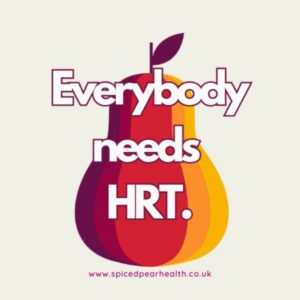

https://unsplash.com/@actionvance
Let’s play a word association game of minerals & their major roles
I say, ‘Potassium’. Maybe you say, ‘Sodium Potassium Pump’
I say, ‘Magnesium’. You say, ‘Muscles?’
I say, ‘Calcium’. You say, “Bones’….
But I say, Second Messenger. And arguably the most pervasive & potent one, at that. Remind you about second messengers? Well, sure. They are the ones who get sh*t done. Not like a boss (i.e. hormone or neurotransmitter) who shout directives from above but never step foot inside the dirty guts of the engine room itself. It’s the second messengers who run these messages from the outside of the cell to the inside and the engine room, to ensure that the directive is actually actioned! Amazing huh! And free calcium in the blood is, as I said, really a superhero even among the second messengers – with its regular responsibilities including: Insulin, TSH, Adrenaline, Oxytocin, Serotonin receptor activation etc etc
Does, it have a dark side? Well, sure. Don’t most superheroes?
If the available Calcium in blood and the extracellular environment is too high then basically bad sh*t gets done. Including vasoconstriction, clotting, deposition of calcium in the wrong place like arteries and joints and etc etc. That’s why the amount of Calcium in our blood is the MOST tightly regulated of all electrolytes and, in turn, has the NARROWEST of reference ranges. But will a Serum Calcium level always tell you when there is a problem with Calcium regulation? No. You’d need to have measured the major regulator itself, Parathyroid Hormone (PTH). Wait, am I seriously trying to tell you, that Serum Calcium alone can look completely normal in spite of really damaging Calcium dysregulation underway – leading to accelerated BMD loss, increased cardiovascular and renal risks etc.? I most certainly am.
So do you know which of your patients’ really need PTH assessment and why 1 dominant group amongst those, is any woman leading up to and following menopause?
No? Well you better pull up a pew and have a listen and a watch then! Yes this latest Update in Under 30 episode even comes with a little video tutorial!🤓🤯
Unmasking Hyperparathyroidism – Menopause & More
Parathyroid hormone is a career criminal. In addition to buoying dropping blood calcium levels via legitimate means, it illegitimately achieves this by stealing it from our bones. But you wouldn’t know it – because like all career criminals this occurs completely under the radar. Elevated PTH, however, constitutes the most modifiable risk factor for bone mineral density loss & fracture risk and offers the biggest BMD gains secondary to its normalisation. In addition to this, even within range but ‘high-normal’ PTH correlates with a range of other cardiovascular and urinary presentations & if combined with elevated serum calcium can become a multi-systemic presentation (GIT, Mental health etc) frequently mistaken for other aetiologies. So how can we be alert to this ‘bone thief’? Which of our patients will benefit the most from PTH measurement and monitoring? This recording, resource & video tutorial on how to use a Ca PTH Nomogram answers all!
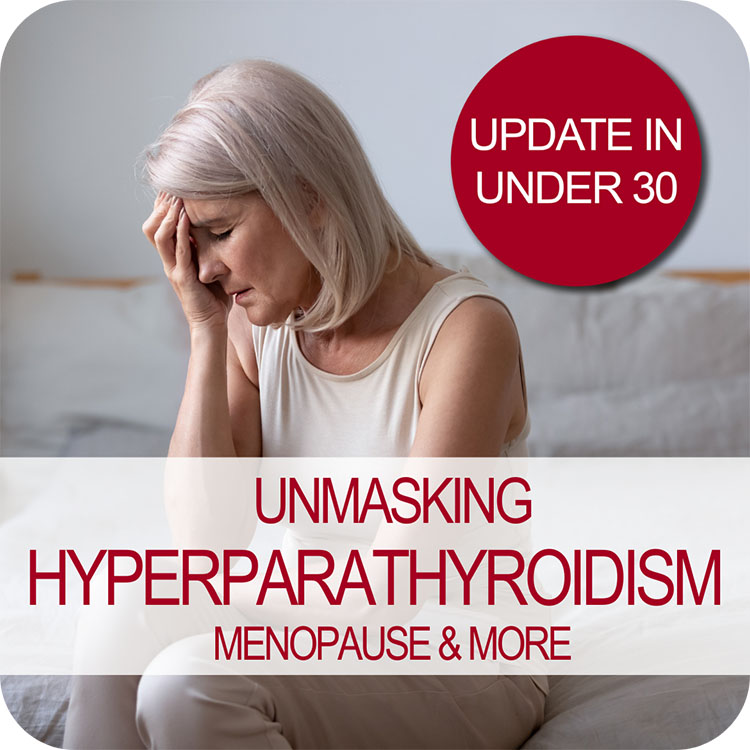
Ever feel like the universe has been preparing you just for this moment? Me neither really…but in this one weird way – yes!
So hear me out.
Thyroid disease as a result of a viral infection was first described in 1902 by Dr Fritz De Quervain and of course he and his ego called it De Quervain’s subacute thyroiditis. For some historical context, this predates the recognised role of iodine deficiency in thyroid disease! Skip ahead almost a century to deep in the 1990s and mini-me was sitting in a uni lecture room [front row & wearing fluro of course🤣] and over hundreds of hours (no scrap that zillions*^# of hours) of lecture content I was exposed to, the description of De Quervain’s Subacute Thyroiditis stood out and stayed stuck to me. I’ve brought it out for a twirl from time to time in the interim with some of my patients & in particular in correspondence with their docs. Skip ahead to the 2020s when we had this thing called. ‘a global pandemic’, and now everyone wants to talk viruses and their broader health implications & as a result, good ol’ Fritz, me and our buddy, De Quervain’s subacute thyroiditis, are all having a moment.
But just to recap – this is (clearly) not new.
What is new is the way this ‘virus of the moment’ has brought this Thyroid V Virus battle to the forefront. We are living an important chapter in history where all the textbook entries on De Quervain’s Subacute Thyroiditis are madly being rewritten to reflect the veracity of this viral attack on the gland and the wide-scale & varied damage that ensues over the months and years that follow. And so many of our patients are the walking embodiment of it – whether that be in the form of low or high thyroid hormones, nefarious changes to gland anatomy only evidenced on US. So what do we need to know? in short, that pathogens as goitrogens have never been more of an issue than right now for ourselves and our patients. And that compared with just our usual desire for comprehensive investigation of the HPT, taking a complete look ‘under the hood’, not only by way of a full TFT and Ab titres but also, wherever there is an additional suspicion – by way of a thyroid US – has become non-negotiable. But regardless of what you find there, once you look, do you know what to do next?
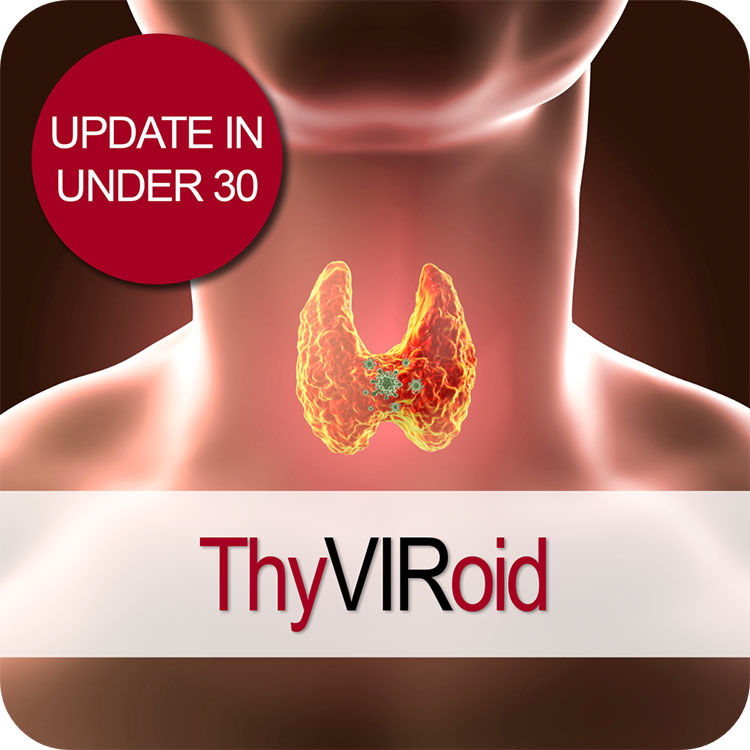 You can purchase ThyVIRoid here. If you are an Update in Under 30 Subscriber, you will find it waiting for you in your online account. You can become an Update in Under 30 Subscriber to access this episode and the entire library of Update in Under 30 audios and resources here.
You can purchase ThyVIRoid here. If you are an Update in Under 30 Subscriber, you will find it waiting for you in your online account. You can become an Update in Under 30 Subscriber to access this episode and the entire library of Update in Under 30 audios and resources here.
And how do we, as integrative health professionals, continue to uphold our principles of prevention and treating the cause when excess adiposity may be a very real contributor? While ensuring we ‘see’ and treat each individual in front of us, not our assumptions about adiposity, not our body size bias nor blind spots?
One part of the answer: read and be led by their lab results – because pathology is nothing if not personalised. (more…)
The builder responsible for my reno arrived one day with a frown. When I asked him what was wrong – he said he’d just had his second high PSA result and now the doctor wants him to see a specialist. It was apparent that he felt this was a real cause for concern. Talk about raising a red flag to a bull 🚩🐂 Yes, of course you know what followed. I insisted on reviewing the results myself only to find the reference range provided on his report was not specific to his age – and if we adjusted up for this (as the science supports) his result is just 0.5 ng/mL above the expected value!
Now, remember he is a builder so, ‘0.5’ in his mind might well be on par with 5mm which apparently is a big deal…or so he keeps telling me every time I try asking for some weird unconventional thing for my roof, windows, walls, whatever!! So I still had to provide a little bit more detail for him to get perspective and to understand the true meaning (and lack of scary meaning) of his results.
This however is just a micro-illustration of a big problem in pathology – we all risk a lack of perspective but if we can get it back, aids us to see that seemingly ‘normal’ results are sometimes a concern, and so-called ‘concerning’ ones, non-significant. The incredible patient insights that can be gained from being able to measure & monitor actual quantities of things in our patients; nutrients to novel disease markers, precursors to end-products, all comes down to understanding how their values compare with…with what? With someone of a different sex and age? With ‘all adults 18-108!’? With any other pre-menopausal woman regardless of reproductive or cycle stage? With ‘the average’ adult given that this current definition is overweight & unwell? Who are we comparing ourselves and our patients to?
When I undertook my undergraduate training many moons ago – there was no education in blood test interpretation. But as soon as I got out into practice I found my patients had all these bits of paper filled with magic numbers that I felt certain might offer me insights and a deeper understanding of their whole health – and how to best help them.
I desperately wanted to decipher this foreign language and made it my mission to do so. I was lucky enough to meet and be paired with a kindred spirit, Dr Tini Gruner, who happened to be my supervisor when I returned to undertake my honours thesis. Together we pooled our knowledge, sought out & shared with each other yet more and found that, together with comprehensive case taking, it provided excellent scaffolding to our work-up of patient cases. Better than that, it created this baseline for patients, identified clear treatment objectives and we could measure the success of our interventions based on how their results did (or didn’t) respond to our interventions. It was (and still is) a totally thrilling way to practice.
We talk about there being both an art & science to medicine generally and certainly an integrative approach. Without the benefit of pathology interpretation, I felt too at sea at times, without quite enough of the science to check the accuracy of the ‘art’ and my speculation.
Being able to understand what each individual result represents and reflects, to know how to form meaningful comparisons – with external reference ranges that speak to healthy individuals of the same sex & life stage, derived from rigorous research – and also form a comparison with the patient themselves, to pick up on the most subtle and significant early alerts to an emerging pathophysiological or healing process – is the skill, I believe, we all need in health to complete the toolkit. That’s why I made it my mission to learn the language of labs, from a conventional & integrative interpretative perspective, and then to share this learning with everyone wanting and willing to take this baton from me (& Tini) and run with it 🏃♀️🏃
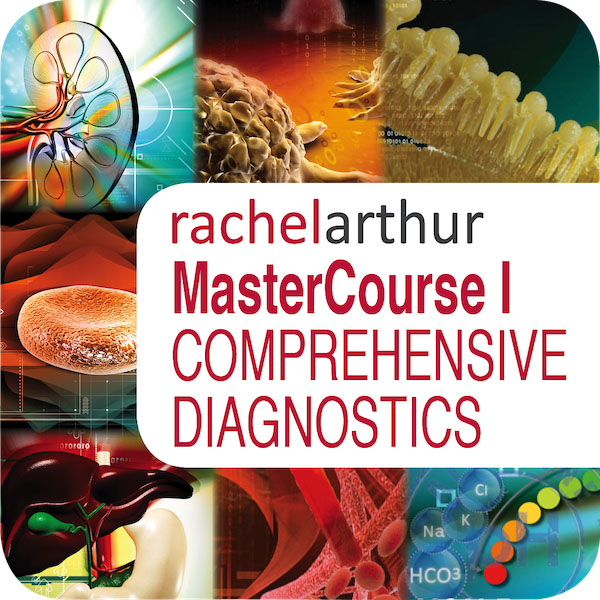
*Please note that this is the place to start for everyone wanting to add preventive diagnostics to their tool kit. It is also the pre-requisite for MasterCourse II, so make sure you have completed this before continuing with MasterCourse II: Thyroid and Adrenal Diagnostics.
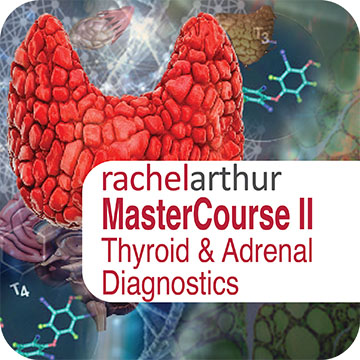
Heck yeah. It’s going to take a lot more than 1 push-back post to turn this ship around! Likewise, I was only getting started with my recent Update in Under 30 episode, ‘What’s Hiding Behind Histamine’ 🤓😂 & part 2 has just been released where we unpack the case of a 41yo female with chronic diarrhoea, multiple food reactions, very high stress and very high oestrogen. Sounds like she’s a walking Histamine Headline – except she isn’t.
Right now we really do need to keep this conversation going such that a healthy discourse can help us deconstruct the histamine dogma.
I know I’m showing my age here, but anyone remember when Candida was having a ‘moment in the 90s? Ok, so that ‘moment’ stretched to over a decade of a ‘Candida-contagion’. No one could eat melons or mushrooms, eat ferments or feel joy. It was a bleak time that did our profession some reputational damage. Not only because seeing an ‘alternative practitioner’ became synonymous with being put on an unbearable, unattainable restrictive diet and positioned practitioners as peddlers of punishment but also because it took some time for science, in the form of accessible (& always improving) assessment methods, to come along and save us from the folly of the 1-diagnosis-for-all mentality.
Let me ask you, how many times do you actually see Candida overgrowth on reports from stool testing performed using best practice modern methods?
In my experience – never – not as a stand-alone issue. Occasionally, as part of the overgrowth of a suite of opportunistic organisms where the real-take home is the need to ‘remove the opportunity’ via the promotion of more good guys. So not only was the diagnosis incorrect, the proposed treatment for it was a complete misdirection as well.
Can’t help thinking in the current climate of Histamine Hysteria that history is repeating itself.
How will we all individually, and as a profession, respond this time?
What’s Hiding Behind Histamine? – part 2
In this follow-up episode we observe how the 3 key elements often hiding behind a histamine intolerance diagnosis: Misunderstandings, Missed Messages & the potential for Mistaken Identity, have played out in the case of a 41yo female who presents with chronic diarrhoea, a long list of problem foods including now a suspicion of ‘histamine foods’. Rachel offers up new ways to approach the patient work-up that cut through the ‘noise’ and enable us to better identify what is hiding behind histamine in similar cases of marked gut dysfunction.
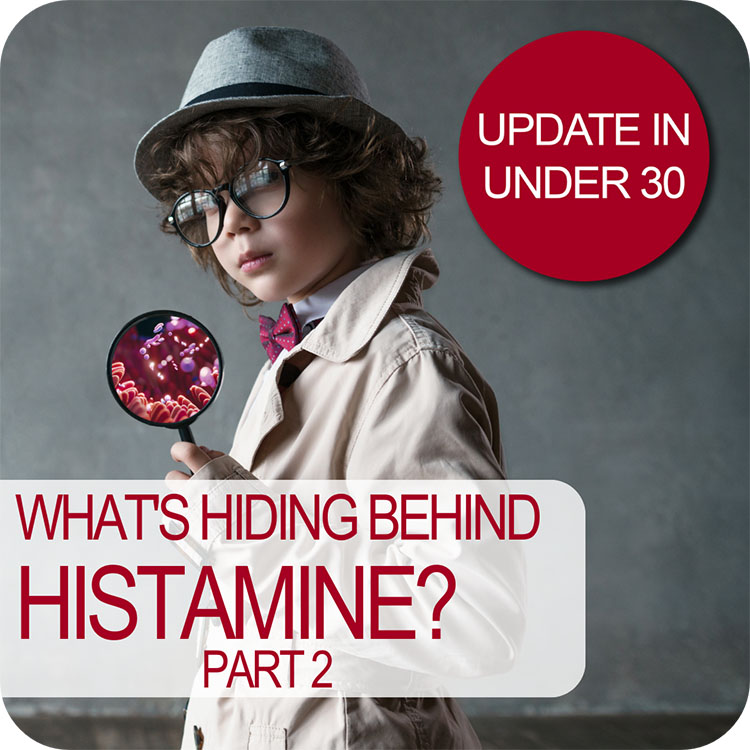
You’re invited to attend acnem’s 2023 Annual Conference ‘Long COVID, Navigating the
Complexity, A Clinician’s Roadmap’.
Saturday 29th & Sunday 30th July 2023, Melbourne. Both face-to-face and online.
To get 25% off acnem Annual Conference
USE CODE: acnem25
What level of Serum Ferritin represents ’empty’? As in complete depletion of iron stores?
Is it any value below the minimum of the reference range? e.g. < 30 mcg/L
Or does the bottom of the reference range allow for a buffer and ’empty’ is substantially lower than this?
Could patients actually be ’empty’ but still have Serum Ferritin values within the normal range?
Could the same Serum Ferritin value occur in one patient on ’empty’ but with adequate stores in another?
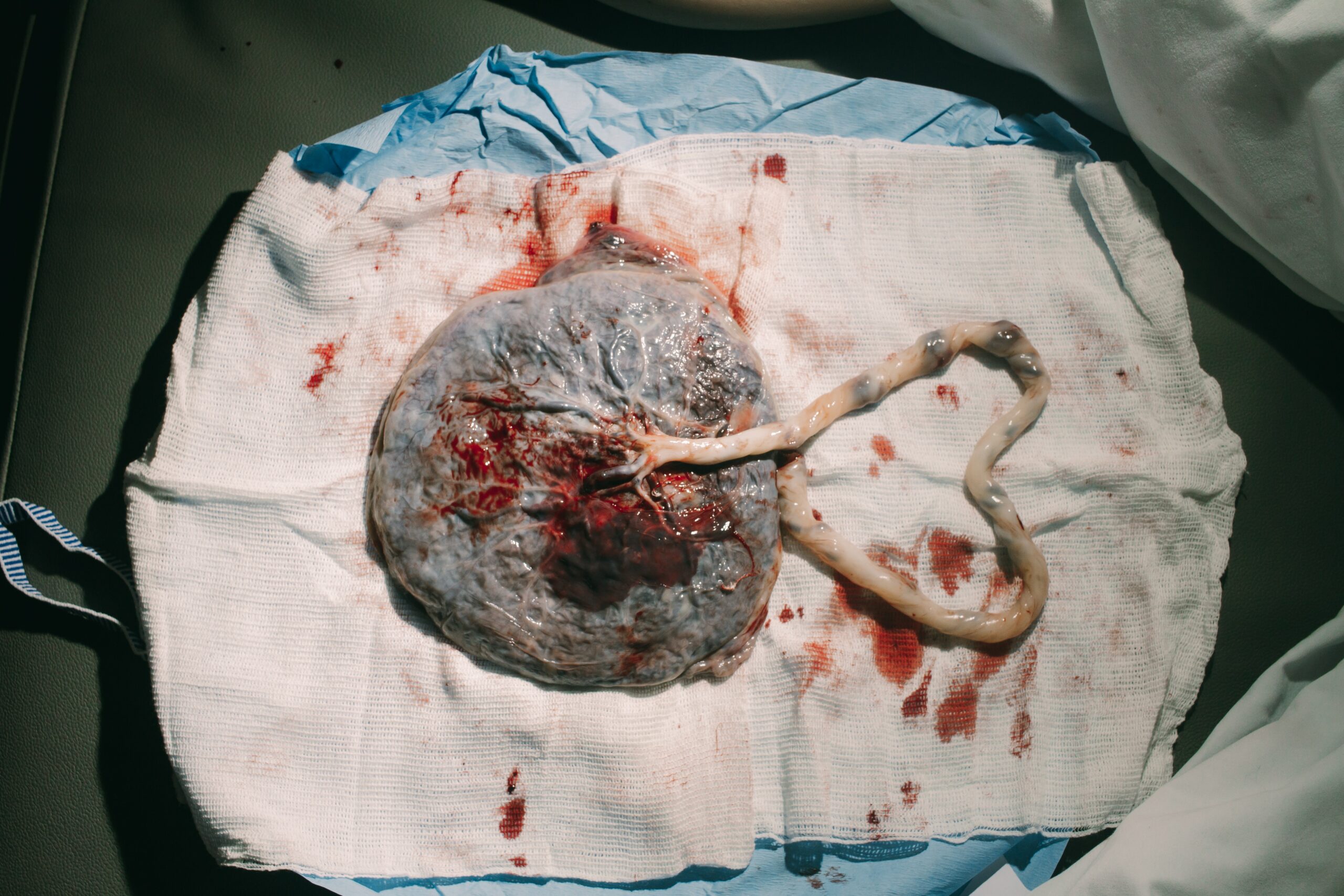

Ever met a set of thyroid results you didn’t like? Because you couldn’t work them out? Because they defied your expectations, & therefore your understanding, of how they should look in this patient given their weight, nutrition, meds, diagnoses? Yeah – me too.
In simple terms this is because we are taught ‘perfect patterns’ in thyroid interpretation:
* Iodine deficiency produces HN (high-normal) TSH and a shift towards T3
*Inflammation produces low TSH and T3 with a shift towards rT3
*Viral attack of the thyroid itself causes HN levels of both T4 & T3 due to spillage of preformed hormones, & secondary suppression of TSH
So can I ask: What about the patient who has a virus that is causing significant inflammation, attacking the gland directly but has a pre-existing Iodine deficiency?
Seriously. What would you expect to see as the HPT responds to all of these concurrent disruptors? (more…)
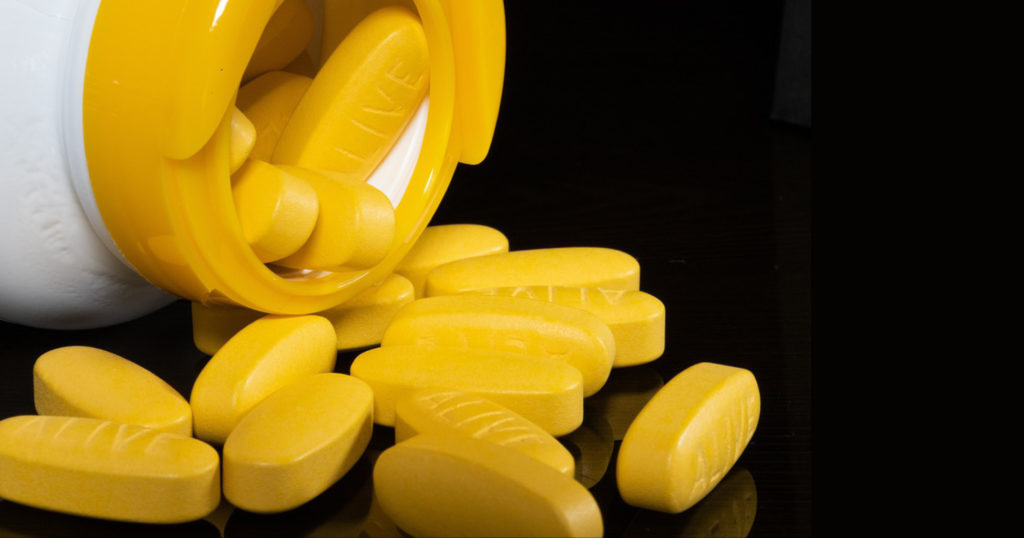
Gone are the days, thankfully, when we could all easily identify any individual taking an antipsychotic 1) because they were the marginalised ‘mad’ and 2) stigma and shame were rife. With the seismic shift that has occurred both in psychiatry & society we now know so many of the people we live or work with just might be taking ‘something’ & under any number of diagnostic labels. And increasingly the ‘anti-psychotics’ are not reserved for the psychotic nor the ‘mood stabilisers’ for the manic. Which can complicate things – especially when it comes to their thyroid.
The latest piece of evidence from a study of over 25K BPAD patients in the US tells us this common misunderstanding makes us prone to not recognise all the other patients in whom their psych meds are disrupting and in fact driving thyroid (dys)function. Though Lithium carbonate remains the most noxious goitrogen due to its multiple disruptive mechanisms – the rest of a large group of Psych meds (yes even antidepressants!) are impacting to the point of effecting the thyroid function test results you are likely to see in patients taking these. And this is something we need to be alert to – these medications are essential, non-negotiable in most scenarios, but a secondary hypothyroidism is not their intended goal and can make matters worse.
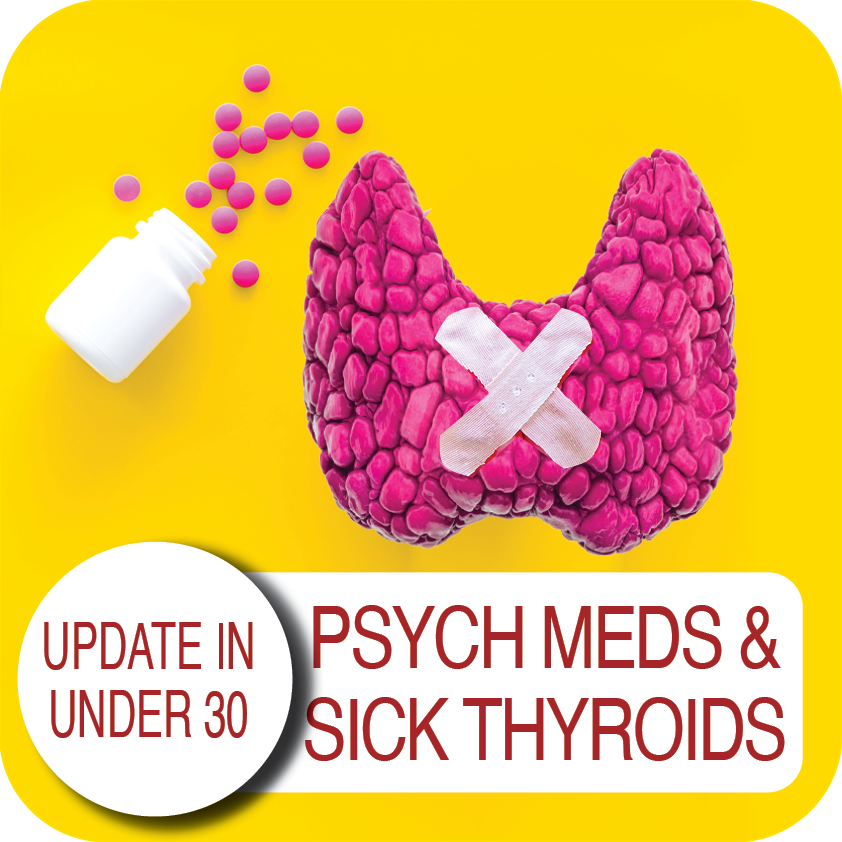
How much?
How often?
When is the best time & timing? do you know about friends, foes and frenemies?
Which form, when? e.g. building blocks or bioactives?
And for how long? aka are we there yet…?
These are the kind of questions that one would imagine nutritional prescribers can always answer – but can you? Yet this is the goal, right? So that with each and every unique individual who needs supplements – we have a clear, consistent go-to framework to guide & direct these prescriptions. One that makes scientific sense, offers optimal outcomes and removes the uncertainty.
From my interactions with thousands of practitioners, however, I know many of these key questions plague practitioners & they feel, at times, as if they’re flying without a net, or without a strong systematic approach, or at the very least without all the answers to these questions.
I’ve had so much good fortune & so many others to thank for providing me with this foundation. Fay Paxton – my nutrition lecturer in my under-grad who indoctrinated me with a systematic approach. Dr. Tini Gruner – my principal supervisor at SCU, who shared & further fuelled my passion for biochemistry and reading labs to extract insights into each individual. And thanks also to all the pharmacists I’ve delivered education to over the years, who, as a result of their grounding in the principles of pharmacokinetics, always ask the best questions – questions that if I don’t know the answer I know I need to know the answer! So I made it my mission to find out!
While we dip into these aspects of nutritional prescribing in our regular mentoring groups on an ‘as needs’ basis, I’ve decided the time has come to create a year-long program dedicated to sharing this information and building this skill-set in practitioners.
This monthly meet-up is delivered live (max 1.5hr) and runs from Feb to November with the following currently proposed format *subject to change dependent upon the needs of the group
This monthly ‘live’ meet up will be delivered as part of 2023 Group Mentoring as The Nutritional Prescribing Program
Group Mentoring applications open 17 October 2022.
To join the waiting list and be notified when applications are open, email the team at [email protected]
Find out more about what groups are available for Group Mentoring in 2023 here.
Have you been told somewhere by someone that the ‘perfect’ TSH is 1.5 mIU/L? This is a wonderful, terrible & wonderfully terrible example of ‘magical numbers medicine’. As a push-back against the published reference ranges we’re given, that are so wide you could drive a truck through them, there has been an over-correction by some, leading to the myth of ‘magic numbers’. We can narrow the reference range substantially for many parameters with good rationale, make no mistake about that but once we start setting ‘aspirational goals’ that are explicitly rigid…well we’ve done 2 things 1) forgotten about the patient to whom this result belongs and 2) disregarded viewing each result as part of a ‘pattern’, that we must piece together and make sense of.
Back to TSH then… if my obese patient had a value of 1.5 mIU/L this in fact would be woefully inadequate – so too a child at any weight.
And we expect a higher value as well in our elderly clients too and this level there may be, in fact, increased mortality.
But the same result would be excessively & worringly high in my patient who’s undergone thyroidectomy.
Realising the full value of any test result in terms of what it reveals about the person sitting in front of you, requires these more thinking and more thoughtfulness. Unfortunately, a list of ‘magic numbers’ will often lead you astray. And building your scientific knowledge about labs will not only help you avoid the pitfalls of pathology but will strengthen your pathophysiology prowess in surprising ways, saving your patients a packet in terms of additional extraneous testing and help you truly personalise your prescriptions…because the ‘invisible (biochemical individuality, oxidative stress, genetic probabilities, subclinical states, imbalanced or burdened processes etc) just became visible’. I started requesting lab results early in my career and years later was lucky enough to be taken under the wing of Dr. Tini Gruner. I found some of our shared notes, from 10 years ago, scribbled all over patient results recently and I was struck by just how lucky I was to have her encouragement to really pursue my interest and how she was a guiding force about learning to recognise pathology patterns over single parameters. A decade on I can concede, much of my clinical and educative success has come off the back of this foundational skill-set and I know, this is true for so many I’ve taught too.
“The guidance I’ve received over the years from Rachel in relation to pathology interpretation has been one of the most valuable (and fascinating) investments I’ve made as a clinician. Her teachings have filled gaps in my knowledge base I never knew needed filling and have significantly enhanced my understanding of the inner workings of the body! Rachel has an incredible ability to make the numbers that patient’s so often present us with, both understandable and clinically meaningful. The knowledge I’ve gained by investing in this skillset has paid off in dividends and I’m certain will continue to do so into the future.”
Stacey Curcio – Cultivating Wellness
I hope you’ll join me for the most exciting up-skilling opportunity in learning labs yet. Oh…and all this talk about thyroid testing..this next MasterCourse series is focused on revolutionising your understanding of thyroid, adrenal, HPT & HPA markers based on the very latest research & findings & marry these together with everything you learned in MasterCourse I (ELFTs, FBE, Lipids & Glucose) to understand the ‘whole story’.
…an absolute treasure trove of free integrative health information about your patient!
DEEP DIVE INTO REAL CASE STUDIES TO DEMONSTRATE EACH PATHOLOGY PATTERN IN ACTION. ]\
There are limited places. To sign up for Rachel’s LIVE Series – MasterCourse II: Thyroid & Adrenal Diagnostics
and for more information click here.
13 years ago I was first asked to contribute to ACNEM’s thyroid training
8 years ago I put together a little Masterclass on Diagnostics & 6 years ago co-created another one on Thyroid
2 years ago I dived deep into new literature to update my ideas & my teaching for ACNEM again & reinspired by all I had discovered
1 year ago I promised a new MasterCourse, for all those eagerly awaiting the next instalment: Thyroid & Adrenals
Now it is about to land!
Across this time I have fallen in and out of love with this topic. ‘In’, in the early heady days of learning some great tricks and tools, ratios and relationships between thyroid parameters (T4:T3, rT3:T3 etc) to aid interpretation but then ‘out’, when I discovered in my own patients and many others, that while this solved some thyroid patient puzzles, it left the curlier ones with questions remaining. I became unsatisfied with the simplistic stereotyping of the thyroid hormones (T3 important & always good, T4 not, rT3 never) and frustrated by the misapplication of ratios & lazy labelling of the thyroid as the ‘problem’. All of these things I intrinsically knew didn’t make good scientific sense and actually revealed a lack of depth in mine & our understanding. So I re-immersed myself in the very latest research and, wouldn’t you know it, in the time between there’s been a mini-revolution taking place in relation to our understanding of the HPT axis and the other endocrine circuits that manage it! Thank goodness for science!!
As a result, not a slide, possibly barely a dot-point remains from what I wrote back in 2009 and not a great deal more from 2015 even.
That’s how far the research has revolutionised my ideas & understanding.
Some of the assay techniques & technologies are new, there’s a river of research & a mountain of meta-analyses published in the time between & I have had the privilege of innumerable more clinical encounters in this space, to really nut out how all this translates into the real world. And most importantly I can confidently say that this training and teaching reflects the truly integrative nature of psychoneuroimmunoendocrinology…did I just make up a word?! Basically, if you think that the hypothalamus and/or pituitary is the boss of the thyroid – we need to talk! There’s a lot I need to catch you up on.
So like our first MasterCourse in Comprehensive Diagnostics earned us a reputation for, we are going to leave no stone unturned – no difficult question – unanswered, like…
So stay tuned… and watch this space! We thank you for your patience and know it will be worth the wait…
“Absolutely loved this course, I’ve listened to each of the recordings at least 3 times now taking furious notes and am still picking up new gems. Love that it’s helping me build up my knowledge and confidence in such a fundamental area of practice. The case studies are super valuable as they bring the labs to life, I’d be keen for more of these! Really appreciate all the extra PDFs / audios that have been added also. Eagerly awaiting MasterCourse II” – Naturopath | Australia
“Why wasn’t this content covered in medical school? As a psychiatrist, I have greatly benefited from attending this course which comprehensively covers the ins and outs of interpretation of pathology labs and how this applies to clinical cases – many of which have both physical and mental health considerations. I believe all doctors from general practitioners to specialists will gain from attending! ” – Psychiatrist | Australia
“Thank you so much for this course, it has been brilliant. It has ‘fuelled my practice’ and many people have benefited already – from such insights. It’s quite thrilling!!! I’ll definitely be signing up for the second course later next year” – Naturopath, Medical Herbalist | New Zealand
I’ve spent the best part of about 4 months recording my *NEW* Advanced Thyroid Assessment training. I told my team this would be easy and quick, given it was to be based on a great little 2-part, 2hr updated presentation I delivered just last year for ACNEM!! Sixteen weeks (like seriously…most of it) numerous rewrites and retakes later, our final product is 4 parts that goes for over 12hrs in total & has a bonus Adrenal recording! And yeah my team are impressed but unimpressed too if you know what I mean?!🙄🤪
Every time another, ‘Oh wow!’, or ‘No way!’, escaped my lips, it was a source of personal celebration, as another deeper layer of learning revealed itself.
But to the wonderful, somewhat weary and definitely wary Sally, who does all my powerpoints, it was met with, ‘Oh boy!’, because it meant many multiple new slides to build full of visual metaphors, animation acrobatics, if not an entire new Part!*#@^
Her sage advice along the infinite research road I’ve been travelling was : ‘Stop. You’re going to have to stop.’
So I did but now I am this meme. Everything I see currently through the lens of thyroid health, I talk in tongues TFTs and my brain is one giant neural network of integrative endocrinological circuits! I have fallen in love with this topic, this neuroendocrine axis and its ‘first responder’ role all over again! Hence our little thyroid character below – all ‘antennaed’ up – is one of the many tools we’ve developed for this training, to teach us that ‘bad thyroids’ per se are extremely rare – but bad scenarios are common (too much or too little of any macronutrient, key micronutrients, a change in the internal or external environment etc etc) and this little fellow and his board of directors (no – not the hypothalamus or pituitary!) – well it’s their job to ‘read the room’, right?!
In the absence of this key understanding we risk:
A lot of lazy labelling in thyroid health – ‘You have a bad thyroid – that’s why you…[can’t lose weight, feel tired, have SIBO etc]’
Misdirected treatment & especially a tendency to overload the butterfly with ‘thyroid’ nutrients – which can do more harm than good
I’ve said many times, ‘perfect number pathology is a myth’ but it runs rife in practitioners’ beliefs about TFT results with complete disregard of the person those labs belong too! Did you know, for example, that your TFTs should all be higher if your BMI is? That your T4:T3 ratio should never be 3:1 if you are on replacement, have hot nodules, are pregnant or are acutely unwell etc etc etc? How about how low your Selenium or Iron levels need to be before this factor will influence the actual levels of thyroid hormones measurable – & what the impact of these deficiencies are well before then that is far more sinister and serious? Yep…you see here I am, pouring just some of the tiny take-homes of Advanced Thyroid Assessment ALL over you!
Watch this space my new Thyroid training is just around the corner!
Are You Running Hot & Cold on Thyroid Nodules?
Any pathology test is only of value if the result produced is ‘real’, or, representative of that individual, right? So the timing of the test is a major pivot point then: do I tell my patient to present for the test, or collect the sample themselves, on their ‘best’, their ‘worst’ or their ‘average’ day? 🤷♀️ Well, that all depends on the question you are trying to answer.
Whenever we reach or refer for a test, we have a question in mind we’re seeking an answer to. But the question always comes in two parts, at least.
Part 1: How much progesterone is she making?
Part 2: …When she’s ovulated & her corpus luteum should be most productive?
A third might refine the question you’re answering further by adding another contextual clarification
Part 3,4,5: …When she’s eating her regular diet, not exercising excessively or under extreme stress
Without these other parts – the answer to the first one: How much progesterone is she making (full stop), is hard to correctly interpret, right? By refining and expanding on the full extent of our question, we can be clear about which elements of this patient’s life the result likely reflects. We might say that for her, this time-point, or set of collection conditions, is a ‘real reflection’ of her generally and therefore, representative. But what if she does occasionally undertake a 5 day fast, or train for & compete in marathons? If we were to specifically test during these times, we answer a different question, right? Likewise every time we instruct a patient to present for their blood tests (routine or fancy schmancy): Fasted, Rested, Hydrated and off their supplements – is this sound advice or a misdirection? Well it depends on the individual in front of you and the real question you want answered about them 🤓
Ahhhhh I love rules: both the making of them and the subsequent breaking of them 🦜🏴☠️
Fasted, Rested, Hydrated & Unsupplemented? Exceptions to the rule
The collection conditions for any pathology test – can refine or ruin the question you were hoping to have answered about your patient but is it always appropriate to ask everyone to ensure their preparation for the test was ‘ideal’? What if their real life is far from ‘ideal’ and contrasts dramatically with these ‘conditions’ e.g. they forget to drink water but never alcohol! Or do they run 20km every weekday and 40 on weekends? And why would we tell some patients to stop their supplements prior to a blood-test and not others? If our goal is to ensure any pathology test answers the question we need answered we need to know how to respond to these and other scenarios. This new update is all about keeping results ‘real’ & representative.
And all 35K results have been collated, analysed & made available so we can be better informed regarding expected Cortisol values based on sex (spoiler alert: women win & when I say win I mean track higher generally🤷♀️), age & life-stage. This month in our Mental Health Primer program I’m talking about how to look at labs through a mental health lens – from the most routine (ELFTs, FBE etc) to those 2nd tier assessments that we might sometimes recognise to provide essential information about our patients. HPA assessment is such a big one in mental health and depression, specifically, because of the 2 major subtypes: typical (can’t sleep, can’t eat) and ‘atypical’ (over-sleeps, over-eats). We all know that in ‘typical’ depression – the subtype we tend to over-focus on due to its dominance (and sometimes therefore miss the atypical patient at our own peril), there is most characteristically a hyper-cortisolism, with poor negative feedback at the HP, allowing for these higher circulating levels. But is your depressed patient with sleep disturbance experiencing higher than healthy or expected cortisol release? No, not necessarily.
You see even the 2 subtypes can have sub- sub- types. Patients can have a diagnosis of either form of depression but have PTSD features or other psych and non-psych comorbidities that make it more probable that their adrenals and Cortisol are turned to ‘low’.
As in unhealthily & unhelpfully low.
And that would then necessitate a very different approach to treatment – a different choice of herbs and nutrients etc., right? As we’ve discussed before, accurately capturing cortisol is a task not for the faint-hearted! Cortisol demonstrates such dynamism – not just regarding time of day and pre-test and test exposures & experiences, but also your geographical location in the world (!), not to mention choice of medium and which aspect of the HPA story that specifically reflects. But for some patients it is essential for best management that we ‘feel the fear & undertake an assessment of their HPA function anyway’! But we need to ensure we get results we know how to accurately interpret.
I use different cortisol captures (saliva, urine, blood) to answer different questions – but if I want to understand the HPA functionality and performance and feedback…then measuring cortisol alone is not adequate – and we are back at blood, which offers us, as always, to go beyond a simple numerical: ‘adrenal output’ & also answer the question: “What were the adrenals TOLD to do?” aka where does any actual mismanagement lie & likewise, the key to correction.
Cortisol – Have you been caught out?
I have! And just recently a stark contrast between the results from 2 different methods of cortisol capture in the same patient illustrated just how likely this is. How do we ‘capture’ something so ‘dynamic’ and interpret anything of substance from a ‘static’ assessment technique? But rather than throw up our hands and throw out the whole attempt to measure cortisol, we can improve the rigor, reliability, and real-world meaningfulness of our patients’ results by refining our timing of tests, choosing the medium wisely & manipulating test conditions to answer specific questions about their HPA function. Great ready reference resource included!
Last week, yet another patient with refractory diarrhoea, up to 10 stools a day, Bristol type 5-7, for 3 decades following a diagnosis of Crohn’s at 16 years old. A range of specialists have thrown everything at ‘it’ – single & combination immunosuppressants, TNF alpha blockers, buckets of sulfasalazine and bathtubs of antibiotics – she’s been gluten and dairy free for years, trialled strict diets that are FODMAPs free, low histamine etc etc etc. She’s even had 50cm of her terminal ileum removed & the diarrhoea continues unabated – perhaps even worse than before…& therein lies a major clue.
1/2 patients with Crohn’s exhibit bile acid malabsorption –> diarrhoea but with terminal ileum resection this jumps to > 90%
This is Type I BAD (Bile Acid Diarrhoea) & is the easiest to spot, being the result of anatomical change. You remove the section of the small intestines responsible for 95% of the reabsorption of bile acids…a LOT of bile acids are going to be present in the colon where they act as potent osmotic laxatives, right? But there are 3 other types which are a little trickier to identify – including one that affects up to 50% of IBS-D patients.
Being a child of the 80s⚡🎹 (ok a teen of the 80s but who’s counting?!) and a personal fan of fat, I NEVER thought I would EVER be recommending a ‘low fat’ diet to ANYONE🤐
But hey, that’s another ‘absolute’ that needs challenging, right? I mean this is the primary, almost only, dietary change these patients need to make and as a stand-alone intervention, is highly effective for many. We’ve had several patient successes in the last year – a total game-changer for patients in similar situations where all kinds of ‘restriction’ had brought zero joy and reward for all their ‘good (dietary) behaviour’. While sequestrants (like cholestyramine) are recommended in BAD, and are certainly worth a trial at least, patients have very mixed results – for some, in combination with the low fat diet it’s a winner – for others these meds cause GIT upset all on their own and actually undo the good of the fat restriction. Being able to identify the true reason for their loose stools and stop them going down endless rabbit holes of ..is it? is it? is a great way to re-empower people who’ve been bossed and bullied by their bowel for far too long 🤓💪🧻
This is not a trick question. Up to 50% of all patients diagnosed with IBS-D actually have bile acid diarrhoea (BAD) underpinning their digestive complaints as well as some patients with non-resolving diarrhoea post-cholecystectomy and gastro. Knowing which ones do and how to manage this, which requires distinctly different approaches from our general management of IBS, is the key. As always, good lessons come from those we learn in the clinic and this story starts with a patient and how we came to recognise the BAD in her belly.
Ever been guilty of having a ‘man’s look’ for something? I have. Particularly when it comes to the online omniverse! I can be a bit flaky at finding things right there on the page…allegedly! So for those of you who have a similar experience with my website & endless educational offerings, I FEEL YOU! We do have a tonne of training options and a whole lot of (love 😉 couldn’t resist the Led Zepplin reference)… lab & diagnostics resources! This has come up in conversation a lot recently, following the release of our RAN Student Pathology Hub, for example: “I’ve done your MasterCourse in Diagnostics, does this cover something different?” or “LOVED😍 this new hub its *$@# incredible resources & extra training vids but I also wished it included your take on… [insert your pick from infinite list: thyroid, cortisol, zinc etc etc etc]
So here’s a Dummies Guide:
How to Find the Help you Need in Diagnostics
And for those of you primed praccies, patiently waiting for our MasterCourse II to land? Well about that…did we mention we got hit with a flood? Twice? And then got covid? Two of us? And have our beloved Nina about to depart to become a mumma!!! Yeah, so our plans to have this up and ready for May changed to Mayhem, real fast 🙄🤪 We will definitely keep you posted on any developments and new timeframes but for now we can only apologise for the delay and will do our best to get back on track with this, at the earliest opportunity. In the meantime maybe a little review of some of MasterCourse I is in order? I refer back and re-listen all the time, myself!!😂
Being a practitioner who is able to read labs will set you apart in practice. For your patients this flows from your ability to form a more sophisticated understanding of what’s happening for them, enabling you to better individualise treatment and deliver superior outcomes. Amongst other health professionals, it will attract positive regard and an increased willingness and enthusiasm for sharing the care of patients with you. Learning to be lab literate could take a lifetime…or you can enter the expressway from the very outset! We have curated the content to reflect the most essential elements, to help you hit the ground running in the shortest period of time. Spread across 12 modules which can be consumed as monthly instalments or, as an all-in-one experience for those wishing to waste no time. The teaching points, tips and tools make the complex simple, engaging, even fun!